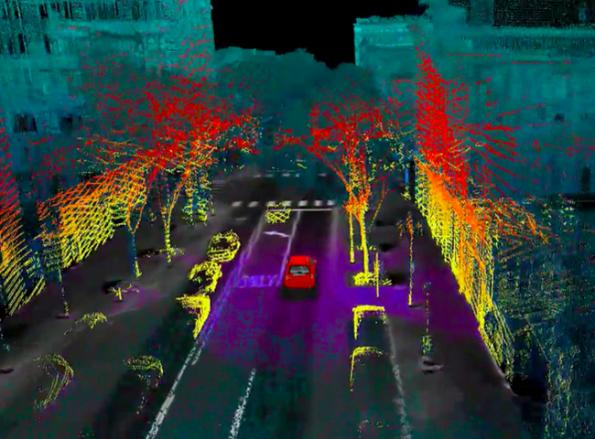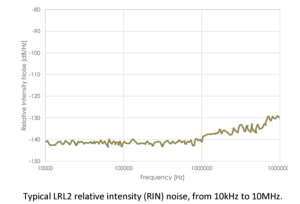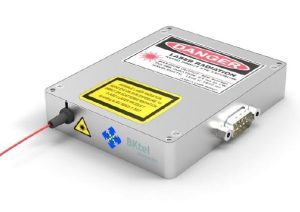
Introduction
Over the past year, we have published several white papers and application notes reviewing both fundamentals and applications of lidar. In the most technically oriented of these papers, titled “Single Frequency Fiber Lasers for Doppler Lidar,” we discussed the ambiguity function and how it predicts the trade-offs between range and velocity resolution for a given laser signal.
In subsequent publications, we then went on to discuss laser requirements for self-driving cars, windspeed monitoring, and active night vision imaging systems. In this white paper, we are going to take a much different approach than those highly technical papers and discuss the wide variety of laser options that RPMC offers for various lidar applications. This paper is broken into three distinct sections, each one highlighting a separate type of laser. In each section, we will not only discuss the various product offerings, but also pair them with the most relevant lidar applications for those sources. Within the lidar industry, RPMC supports customers whose applications span the automotive, agricultural, mapping and surveying, environmental monitoring, and aerospace markets, to name a few. As a result, we can leverage that breadth of knowledge to provide you with a wide range of examples for each type of product.
Fiber Lasers
As we covered extensively in “Single Frequency Fiber Lasers for Doppler Lidar,” if you want to measure both the speed at which an object is moving and its location, there is no better option than frequency modulated (FM) lidar. For this signal processing methodology to work, you need to maintain precise control over the laser frequency. While a wide variety of single-frequency lasers have been used in Doppler lidar research, the industry as a whole has adopted single-frequency fiber lasers as the ideal light source. Here at RPMC Lasers, we offer a wide assortment of 1-micron and 1.5-micron fiber lasers and amplifiers from BKtel, which are ideal for FM lidar, especially applications in the automotive (selfdriving cars) and wind farm (windspeed monitoring) industries. All of the lasers produced by BKtel are compliant with all Telcordia requirements and are beyond rugged with operating temperatures ranging
from -40oC to +65oC.
Figure 1 LRL2 Single Frequency Fiber Laser from BKtel.
One example of an ideal CW single-frequency fiber laser for lidar is the LRL2, shown in figure 1, from BKtel. The laser provides a perfect TEM00 output beam with up to 1 W of output power and a linewidth of 10 kHz. The LRL2 is exceptionally stable with ambient temperature fluctuations having a wavelength drift of only 0.1 pm/oC and extremely low relative intensity (RIN) noise, as shown in figure 2 below. Not only are the optical characteristics of this laser ideal for lidar signal generation; it's compact (120 mm x 100 mm x 20 mm), energy efficient (<30W power consumption), and rugged design make it ideal for integration in lidar systems in the harshest of environments.

Figure 2. Typical LRL2 relative intensity (RIN) noise, from 10kHz to 10MHz.
Another example of a BKtel fiber laser, which is excellent for lidar applications, is the HFL series of 1550 nm high power pulsed fiber lasers. These lasers are capable of producing 4 W of average power with a 400 ps pulse width and a pulse repetition rate of up to 1 MHz. This high-power short-pulse laser is excellent for precision time-of-flight (TOF) measurements of stationary targets over vast distances, for example, in aerial ground mapping applications. Lastly, it is essential to mention BKtel's fiber amplifiers, such as the UHPOA-L ultra-high-power optical amplifier, which offers up to 10 W of output power with only 0.5 ps of mode dispersion. This is an ideal amplifier for long-range TOF lidar as well as the HOPA series, which can provide up to 37dBm of amplification with a noise figure of only 6 dB.
Diode-Pumped Solid-State Lasers
While many lidar applications make use of 1.5-micron light because of eye safety, for some applications, that wavelength is simply non-functional. For these applications, diode-pumped solid-state (DPSS) lasers are a far better option since they allow for both high pulse power and a variety of wavelength options. For example, in bathymetry, because of the absorption spectrum of liquid water, 1064 nm and 532 nm lasers are typically used as the two transmission wavelengths for this application. In this process, the 1064nm laser is first used to establish the reference level for the surface of the body of water, using standard TOF processing. Once this reference level is determined, the system will then look at the TOF for the green laser minus the TOF for the 1064 nm laser to calculate the total depth.
RPMC Lasers offers a wide range of DPSS lasers from Bright Solutions, which are available at 1.5-micron,1064 nm, and 532 nm, which are specifically designed for harsh aerospace environments. One such laser system is the Vento from Bright Solutions. This laser, which is only 55 cm x 40cm x 20 cm, is perfect for deployment in smaller manned aircraft such as a single-engine propeller plane, while still meeting or exceeding all of the optical requirements. The Vento is a 532 nm diode-pumped solid-state (DPSS) laser with a built-in amplifier allowing it to produce over 1.5 mJ of pulse energy with a pulse width as low as 350 ps. This laser system is capable of producing up to 50 W of average power at a variable pulse repetition rate. As a result, these lasers are currently deployed in a wide range of commercial bathymetry systems. The Vento is also available at 1064 nm, making it the ideal

 SHIPS TODAY
SHIPS TODAY 
